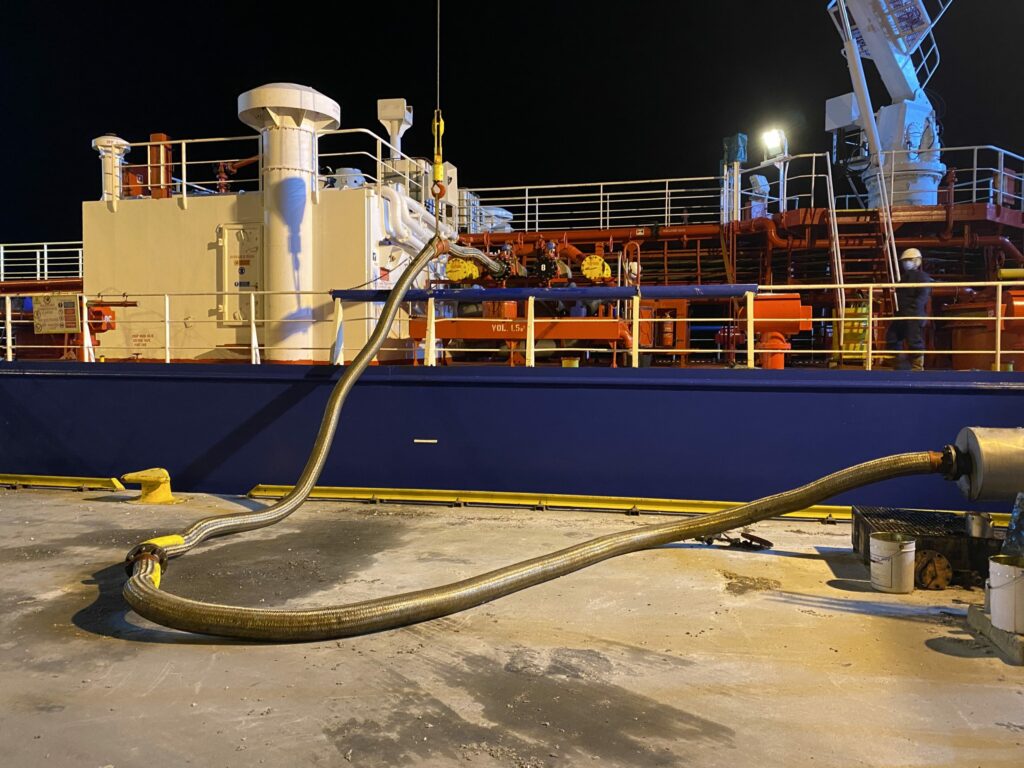As all are aware by now, operations onboard a merchant vessel can be very hazardous and dangerous to the crew and in such cases, a work permit on the ship might be required. Each ship has its own safety management system to guide, train and monitor almost all work and operations. Included in this system is the work permit for the crew to accomplish.
A work permit is a form of checklist onboard ships that is being accomplished by a competent person and crew before performing a certain task.

In order to avoid injury or death to the crew by accident such as burns, electrocution or even falling into the water, all crew must be familiar with working permits before performing any task. The safety officer must make sure that working permits are not bypassed or disregarded.
What is the purpose of a work permit?
Working onboard merchant ships can be hazardous and at times dangerous. From welding sparks to cutting metal sheets, entering enclosed/restricted spaces as well as handling chemicals and electrical work. These jobs are prone to minor incidents which if not properly handled can escalate.
Work permits as instituted in the Safety Management System are a systematic process used to authorize work/jobs onboard with potentially hazardous conditions. The process includes risk assessment, the establishment of safety protocol, communication, and oversight to minimize or eliminate environmental, health, and safety risks.
Risk assessments are an integral part of a work permit. It allows the crew to identify the potential hazard and creates situational awareness as the work progress. The officer and crew can examine the area and situation to prevent harm to workers, property, and the environment.
Safety protocols remind the crew of the gear and equipment necessary before performing the tasks on hand. A checklist is given to guide the persons involved on what to check as well as prepare things needed for the job and set up lifesaving or firefighting equipment as needed.
Communication and oversight cover the work at hand and ensure that competent persons are accountable. This allows the bridge officer on watch to be aware, monitor, and respond accordingly in case an incident occurs. Overall, the working permits allow for a job/task at hand to be performed properly.
How many types of work permits?
Work permits are categorized onboard depending on the nature of the task and the hazards involved in it. These are the hot work permits, cold work permits, enclosed space entry permits, working aloft permits, electrical work permits, working outboard permits, small craft alongside permits, and underwater pork permits.
Hot work permits must be accomplished prior to jobs like welding and cutting steel, pipes, sheets, etc. Master and Chief Mate/Chief Engineer should be satisfied before approval of such permit. If work is done in port, proper authorities must also be informed. Fire safety precautions and measures must be properly observed as well as the establishment of a fire watch.
Cold work permit covers those tasks that are not part of hot work. These include disconnecting pipes, and fitting valves, blanks, or blinds. It also covers tasks that cannot create a source of ignition or generate temperature conditions likely to be of sufficient intensity to cause ignition.
Entry into the enclosed space permit covers jobs like cleaning ballast tanks which may include top-side tanks, double-bottom tanks, and for or aft peak tanks. Such a permit would allow the crew to check the oxygen content of a particular tank and monitor other gases. Communication must be established with the lookout so as to respond immediately when an incident occurs.
Maintenance on the monkey deck would most likely require an electrical work permit when the Electrician checks the scanner of Radar ARPA, ECDIS, GPS, and other equipment. Proper signage must be placed to avoid inadvertent use of any equipment. Proper personal protective equipment must be used to avoid the electrocution of any crew.
A working aloft permit is required for any work that is to be done more than two meters on any deck surface. These tasks include maintenance work on the deck crane, painting of the superstructure and funnel, as well as other deck maintenance that would require the use of scaffolding, bosun’s chair, or staging. Safety precautions and gear must be established to avoid injury.
Examples of work permits, work to be performed and hazards to be considered.
| Work permits | Examples of Work | Hazards to consider |
|---|---|---|
| Hot Work permit | Welding, metal cutting | Risk of fire, burns |
| Enclosed space permit | Tank maintenance, tank cleaning | Asphyxiation |
| Electrical work permit | Radar maintenance | Electrocution |
| Working Aloft permit | Superstructure painting | Fall/injury |
| Working outboard permit | Anchor maintenance, hull painting | Fall/drowning |
| Cold work permit | Fire pump maintenance | Body injury |
| Small craft alongside | Bunkering, ship stores supply | Fire/Explosion/Oil Spill |
| Underwater work permit | Under keel diving, an inspection of the propeller | Drowning/Hypothermia |
- Types of Gas Carriers as per IGC Code – April 22, 2025
- Wind-Assisted Propulsion Systems (WAPS): A Game Changer for Maritime Decarbonization – February 6, 2025
- 10 Boat Salvage Yards in California – January 25, 2025



